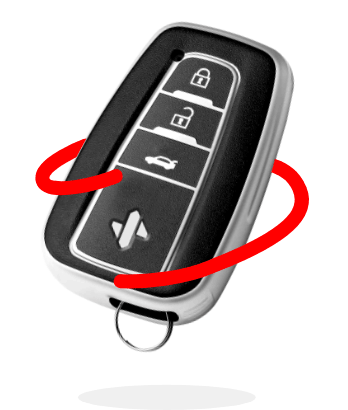Insurance may not be your first thought during your trampoline purchase; instead, you’re more interested in looking up important safety equipment like nets and padding.
While these things will certainly keep your family safer, insurance coverage for your trampoline could save you untold medical and legal costs, should there be an accident.
From head, neck, and back injuries to fractures to internal organ damage, even the safest users can’t avoid the dangers of trampolines. In fact, according to the U.S. Consumer Product Safety Commission, trampolines are the cause of just over 100,000 reported injuries each year.
If you’ve purchased a trampoline — or are about to — your first step should be to speak with your insurance agent about proper coverage.
You’ll likely have some questions about trampoline insurance coverage. Here the five important questions you need to know the answers to:
- Do I need insurance for my trampoline?
- What happens if I don’t share that I have a trampoline with my insurance company?
- Does my home insurance cover trampolines?
- What do renters and landlords need to consider with trampoline insurance?
- Will my insurance premium increase with trampoline coverage?
1. DO I NEED INSURANCE FOR MY TRAMPOLINE?
The short answer? Yes.
Just as home insurance is critical to protecting your belongings and bank account in case of a disaster or accident, getting coverage for potentially dangerous outdoor hazards (like a trampoline) is critical.
Whether you, your children, or your children’s friends have an accident on the trampoline, you’re looking at substantial medical bills and even lawsuit costs. What’s more: you also want to protect the new trampoline should there be damage to it from a storm or other natural disaster.
Before the trampoline is even set up, it’s best to ensure you are covered against potential injuries or accidents.
2. WHAT IF I DON’T SHARE THAT I HAVE A TRAMPOLINE WITH MY INSURANCE COMPANY?
Looking to purchase a trampoline and sneak that little detail past your insurance carrier? Think again; there are three big issues with that.
You’ll have to be honest to inquire.
In order to check whether your current policy covers having a trampoline (and inquire if additional add-on coverage is needed), it’s critical to contact your insurance company. That call will obviously give them an idea you’re considering a trampoline.Your coverage could get cancelled.
If you choose not to tell your insurance carrier that you have a trampoline, you run the risk of having your coverage cancelled and unable to be renewed.Insurance inspectors have been known to visit insured properties to confirm the details you’ve provided are accurate. If they show up and see a trampoline that they know nothing about, you’re now misrepresenting your property and the liability exposure.
High probability you won’t be covered if there’s an accident.
Last, but certainly not least, if there is an unfortunate accident involving your trampoline, your insurance policy likely won’t cover any personal injury or related lawsuit claims. In other words: you’re left to pay the colossal pile of bills yourself.
3. DOES MY HOME INSURANCE COVER TRAMPOLINES?
Like all insurance policies, whether your home insurance covers a trampoline has the same answer: it depends.Your policy is unique, so it’s critical to check with your provider to see if 1) you already have trampoline insurance coverage, and 2) you can purchase additional coverage.
Each insurance carrier is different in how they handle trampoline coverage, meaning there are several possible scenarios for your insurance company:
- Trampoline insurance is part of the standard policy (and no additional coverage is needed).
- Trampoline insurance is possible with additional coverage.
- Trampoline insurance is possible, but liability coverage is limited.
- Trampoline insurance is not possible.
Trampolines can be covered in a no exclusions policy.
For those potential trampoline owners with a no exclusions policy, there are no restrictions on trampoline use and coverage. That means everything is covered with the existing policy; for example:- Liability coverage: a trampoline injury to a visiting guest
- Dwelling or other structures coverage: the trampoline is blown by strong winds or a storm and damages home or other area on your property
- Personal property coverage: the trampoline is damaged by hail or a fallen tree
Trampolines can be included with safety precautions in your policy.
Some policies will allow coverage for a trampoline, as long as specific safety precautions are put into place. This may include measures such as safety nets, additional padding, or a locked fence around the trampoline.Trampoline insurance coverage varies by state.
Depending on the carrier, coverage sometimes depends on the state where you live. Insurance policies change state to state, so check with your carrier about your unique coverage.Trampolines can be covered, with additional coverage.
Policy add-ons, such as increased liability limits or a PUP (Personal Umbrella Policy), may be necessary to give you coverage if you have a trampoline. Of course, these additional policies also come at an additional premium.Trampolines can be covered, but have exclusions, in your policy.
Similarly, some policies will cover certain claims, such as a damaged or stolen trampoline; while it will not cover other claims, such as injuries.
Trampolines can be categorized as an attractive nuisance.
An attractive nuisance — or a potentially dangerous feature on your property that might attract children and cause harm — is how some insurance policies categorize trampolines. Depending on the policy, attractive nuisances may be covered, not covered, or covered with exclusions.
Trampolines can be included as an exclusion in your policy.
With this policy, under no circumstances can you have a trampoline on your property. If an auditor discovers one or you attempt to submit a claim for a trampoline incident, your policy will likely be canceled or you’ll be unable to renew.
4. WHAT DO RENTERS AND LANDLORDS NEED TO CONSIDER WITH TRAMPOLINE INSURANCE?
When it comes to rentals, owning a trampoline is a whole other ballgame. It’s important to understand where liability belongs.For renters
While some renters insurance policies do cover trampolines, adding the coverage necessary will likely increase your overall premium.If you’re renting your home, condo, or apartment, the best steps you can take are speaking to your landlord and then your insurance carrier for approval and coverage of a trampoline.
For landlords
Since the liability of the property ultimately falls to you, many landlords choose to include clear language about trampoline exclusions for tenants in the lease itself. That way, there is no misunderstanding.However, should you choose to allow tenants to install a trampoline, refer to the section above regarding unique policies. Then, check with your home insurance carrier for your coverage options.
5. WILL MY INSURANCE PREMIUM INCREASE WITH TRAMPOLINE COVERAGE?
Again, the answer to this question will depend on your insurance policy and carrier.Since some policies do not have exclusions and cover trampolines under any circumstances, you may not see an increase in your premium.
However, more than likely, with added liability for your insurance carrier and potential add-on policies, you’ll see an increase in your premium each month or year.
Stay safe and avoid trampoline accident claims
While your premium may increase, that doesn’t mean that you can’t take more steps to protect yourself, your family, and any visitors from potential accidents (and deductible costs).Here are some extra safety precautions you can take for your trampoline:
- Install padding that completely covers the springs, hooks, and frame of the trampoline.
- Install high netting around the trampolines to reduce fall risks.
- Keep the trampoline away from hard surfaces, like hardscapes, concrete, and high fencing.
- Install a fence (a safe distance away) around the trampoline with a lock, so no one can access the trampoline during unwanted times.
- Keep good communication with your children, including clear rules, such as: who is allowed on the trampoline, how many people can be on the trampoline at once, etc.
- Always supervise children on the trampoline.
Safety should always be the primary consideration if you’re looking to add a trampoline to your property, but these measures will also mean less potential insurance claims.
Trampolines are a fun way to spend time with your friends and family and great exercise for your children, but they don’t come without risks. If you’re considering a trampoline for your property, start by contacting your home insurance carrier to find out your options for coverage.
If you need help finding the best home insurance coverage for the best price, start by speaking to a SimplyIOA agent at 833.872.4467 or get a home insurance quote online now.










